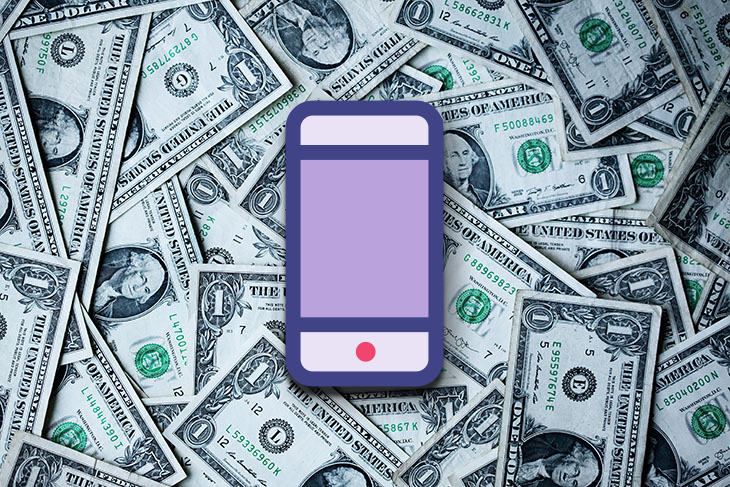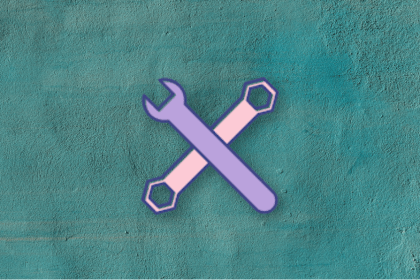I could easily paraphrase the popular quote, “Appreciate your apps, you never know when they will go away” when I look at the IT market. Products that were a symbol of selected generations, like Winamp or Napster, are now long forgotten, closed, or simply no longer needed.

Some apps are minimum viable products (MVPs) or experiments that never found their product-market fit. The best example here is the Google Cemetery website, which lists 166 Google products that were shut down. It includes spectacular failures such as Google’s cloud gaming product Stadia, social network Google+, or, my personal favorite, Google Wave (a communication tool I miss a lot).
Sometimes, products have to be shut down when the market changes, like in the case of many unofficial Reddit clients when Reddit itself skyrocketed its API usage cost. However, what happens if a first party-owned, beloved product that appears to be stable and successful suddenly announces a shutdown? What could have happened?
As you may have heard, Intuit announced just this with its popular budgeting app, Mint. Let’s look at the Mint app, its recent developments, and what could have driven the closure decision from a product manager’s point of view.
The Mint app is a free personal finance app that helps you manage your money, budget, and bills. It was launched in 2007 by Aaron Patzer, who wanted to create a better alternative to Quicken, another personal finance app.
The Mint app quickly gained popularity and won several awards for its design and functionality. In 2009, Mint was acquired by Intuit for $170 million. Intuit also owns popular products like Mailchimp (acquired in 2020) and TurboTax and has been strengthening its position in the financial software industry. By 2021, the Mint app had 3.6 million active users according to Bloomberg.
Let’s briefly walk through some of its features that made it such an attractive app for people wanting to track their spending.
On the Mint app, your spending is automatically categorized and shows your spending trends, net worth, and cash flow. While I didn’t get to use Mint, my banking app has something similar and, indeed, it helps you put things into perspective.
Just last week, thanks to such visibility, my wife and I calculated that ordering a full meal program, similar to something like HelloFresh, is the most efficient way to maintain a healthy diet when it comes to time and money investment.
On Mint, you can set up monthly or yearly budgets for different categories, such as groceries, entertainment, or rent. It also lets you set up savings goals, such as saving for a vacation, a car, or an emergency fund. The app uses notifications to help you know where you are with your goals. While many people, including myself, create buckets for their money in their heads, this feature is a great way to visualize this.
The Mint app analyzes your financial data and gives you suggestions on how to save more, spend less, and improve your credit score. It also alerts you of any fees, charges, or unusual activity on your accounts. This is a useful feature in the era of remote identity thefts and credit card scams.
Mint partnered with Billshark, a service that negotiates lower rates for your cable, internet, phone, and other bills. It also helps you cancel or switch any unwanted subscriptions and memberships.
All of these features sound great, don’t they? Unfortunately, despite this success and substantial user base, the Mint app is closing down.
Intuit announced on 31 October 2023 that the app would be shut down by 1 January 2024. Intuit is suggesting that Mint users move to Credit Karma, another one of Intuit’s products.
So, the big question is why? The reason for closing down the Mint app is the supposed consolidation of Intuit’s personal finance products and to prioritize their focus on Credit Karma, which has more features and functions than Mint. However, some key features that made Mint what it is are said not to be available in Credit Karma, like budgeting. Thus, it’s understandable why users are so upset, especially among the Mint app Reddit community.
Let’s take a step back and look at the whole ordeal from a product manager’s point of view. While those corporate announcements don’t have to be inaccurate, they are often quite far from the actual truth.
Based on my many years of experience as a product manager in both small startups and some of the biggest corporations in the world, here are several scenarios that could justify the closure of the Mint app.
Developing any software is always a challenge. You race at a breakneck speed to sprint to deliver required features and try to reach your goals. That is not without a price. One of the most common reasons for sunsetting products or shutting down business units is finances. If the cost of keeping a product going is hovering around the money it takes in, it might be worth letting it go altogether to invest in more lucrative parts of the business.
In tech specifically, poor technical and architectural planning on the codebase end will eventually come back with a “payback” demand. This payment of so-called tech debt may be required to finally meet certain security requirements, add important modern integrations/features, or simply keep it running.
I can see an app developed for 16 years hit such a breaking point when previous mistakes or intentional shortcuts require a significant technical investment just to keep going. Coupling this with Mint’s rather weak monetization model (advertisements and referrals), it may have been discovered that making the app viable for the future will be accounting madness.
And just like an Excel spreadsheet can mandate firing hundreds of employees, it can also put an end to a beloved product. The same Excel can even tell you that if you manage to convert at least a few percent of Mint users to your other products due to closure, you will be far better off profit and loss (P&L)-wise than if you decided to keep the app around. This can easily justify the potential final reason for Mint’s closure.
Remember Blockbuster, once the most popular DVD rental company in the US? They had this little competitor grow under their noses, a minor startup called Netflix. Well, you might have forgotten Blockbuster, but you sure know Netflix! Many years ago, Netflix offered to be purchased by their big competitor, who laughed them out of the room. Who is laughing now?
The reason I bring this up is that it holds an important lesson for product and business managers. While you are ahead, you are in a position to buy out and close any competitors that might be picking up steam before they become a real threat to your company. While, usually, it doesn’t sound as nefarious and hardly any company would admit to killing emerging competitors with money, this is a valid strategy to ensure product/business longevity.
This also comes with the bonus of acquiring the talent behind the promising competitor at a discount, as growing companies likely pay lower salaries than those working in mature, established enterprises.
If this was indeed the plan, why now? Why not 14 years earlier? Well, it is not about optics anymore. While you don’t want such an aggressive takeover and shutdown to be obvious, 14 years is a lot of time to wait to execute such a plan.
Of course, plans change. Upon welcoming Mint to Intuit’s portfolio in 2009, Intuit could have noticed different opportunities with the smaller players and decided to bet on them. Those bets might as well have been the original intention.
Acquiring new users is always an expensive effort represented by one of the most prominent marketing metrics: customer acquisition cost (CAC). With growing market saturation, the rising prices of adverts, and privacy laws getting tighter and tighter, it is getting more and more expensive to capture new leads, not to mention converting those into customers.
Given marketing budget sizes, it’s always smart to entertain creative alternatives. What if you could simply purchase a similar product with a few million users? If so, you may discover that you paid 2–3 dollars per lead, which is at a level of the most successful Facebook campaigns I’ve seen. On top of that, you are likely getting a valued, respected product that can grow its client base and has a positive cash flow. In such a case, this is an absolute win-win and a great investment.
I can see a scenario where the “lead magnet” was the original motivation for the acquisition, but in the last few months, maybe years, the “lead wagon” slowed down or stopped, making it no longer an attractive product to keep around. This might have happened due to several reasons and one of them might be that it no longer made strategic sense.
Let’s assume that for all the years since the acquisition, Mint aligned with Intuit’s strategy, had a positive P&L, and even promised a sufficient number of leads for other products. However, to run any product, you need brainpower. I can picture a situation where running similar products with several teams essentially competing with one another no longer made sense.
Business-wise, it might have made more sense to focus all of the company’s potential on a single product that promises better revenue, easier development, and more potential for growth. This way we made a full circle and essentially returned to the officially stated reason for Mint’s closure.
Unfortunately, it all boils down to having a successful and growing business. If Mint could not support this goal, it had to go.
We, product managers, are data-driven professionals who aim to deliver maximum value to users and businesses at a minimum investment and risk. That will sometimes translate into beloved features and products, and other times it will create a website listing the company’s failed products.
This forces me to recall times when my product work would benefit the company and the wider product, but at the same time would invalidate my team’s existence. While I can’t share the outcome of this story, I can also give you another point of view.
Just like how the Twitter brand might eventually die down and be referred to only under its current “X” branding, users will forget or replace Mint, and the world will move on. While we may never have 100 percent certainty on the true reason for the app’s closure, we can be sure it is an action that makes sense for Intuit and its future.
While this is no consolation to the disappointed Mint’s users, it is the best product management angle I can offer.

LogRocket identifies friction points in the user experience so you can make informed decisions about product and design changes that must happen to hit your goals.
With LogRocket, you can understand the scope of the issues affecting your product and prioritize the changes that need to be made. LogRocket simplifies workflows by allowing Engineering, Product, UX, and Design teams to work from the same data as you, eliminating any confusion about what needs to be done.
Get your teams on the same page — try LogRocket today.

Stop letting unreliable data block features. Treat data as inventory to track quality, ownership, and ship with confidence.

Learn why slide decks slow teams down and explore better tools like whiteboards, PRDs, and prototypes to improve collaboration and alignment.

AI PM roles are evolving fast. Learn the five types of AI PMs, the skills they need, and how they shape AI products across industries.

Learn how you can use AI agents to automate workflows, boost productivity, and choose the right tools while avoiding common pitfalls.